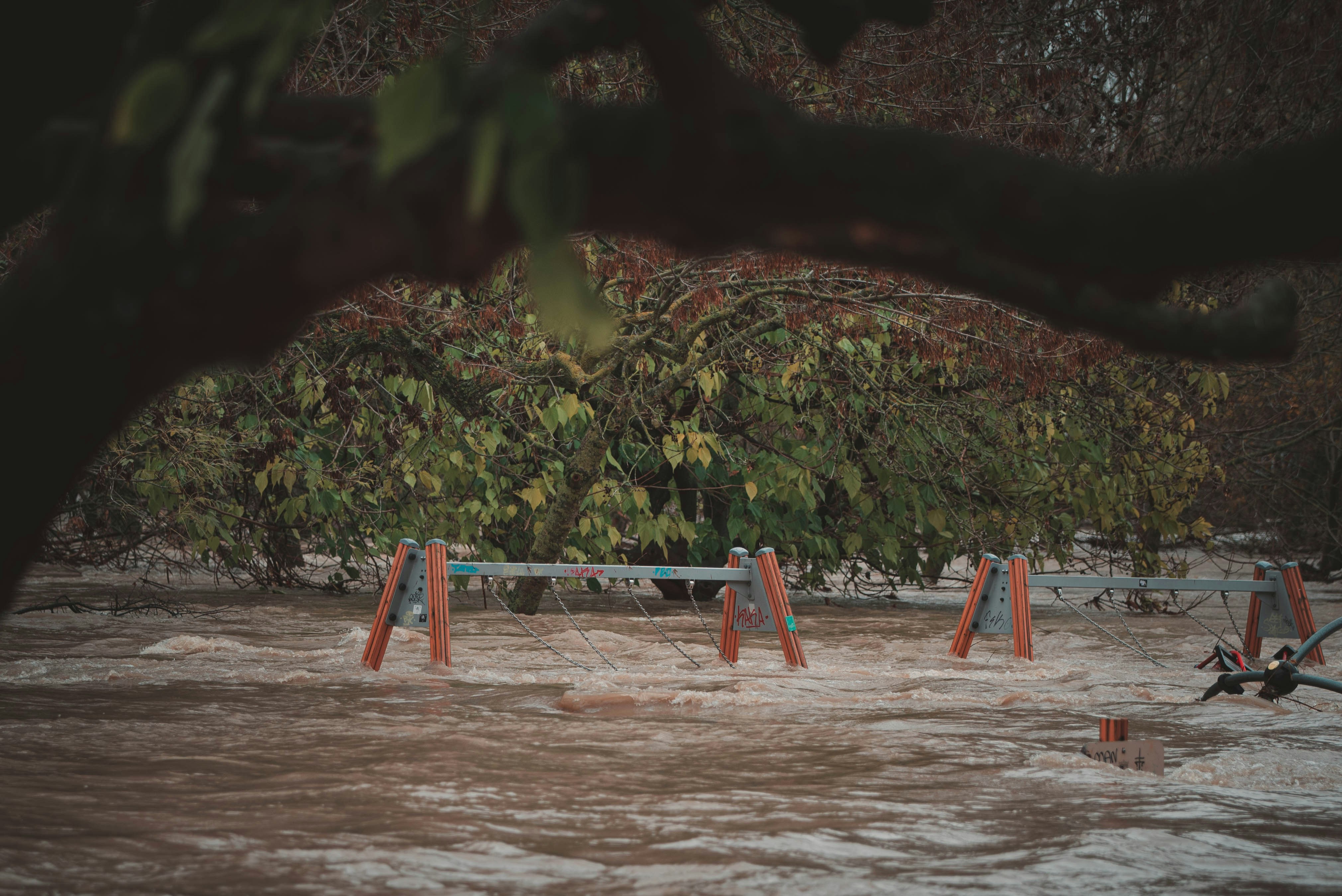What If the Road Is Gone? Solids Management in Post-Disaster Access Lockouts

For private utilities in resort towns, rural developments, or mountain communities, the most expensive line item after energy is often solids hauling. And unlike electricity, there’s no “backup generator” for a full digester in a wastewater treatment plant. If the road is blocked and the trucks can’t get in, you’re on the clock.
Floods, landslides, wildfires, and blizzards can all cut off access for days—or weeks. When that happens, the question isn’t just “How do we keep running?” It’s “How do we avoid violating our permit, overflowing storage, or creating an environmental emergency before the road reopens?”
The Solids Storage Squeeze
Most legacy lagoon or conventional activated sludge process (CAS) plants weren’t built with weeks of emergency solids management in mind. Operators rely on routine hauling to keep wastewater solids volume in check.
Once hauling stops:
- Digesters creep toward capacity.
- Clarifiers lose settling performance as suspended solids recycle.
- Biological wastewater treatment efficiency drops as wasting slows.
- Permit risk climbs with every passing day.
For private utilities discharging into small receiving waters, even a brief solids handling failure can tip a creek or pond into impairment status and put your permit–and Clean Water Act complaince–in the crosshairs.
Designing for No-Access Scenarios
The best time to plan for a lockout is before it happens.
At IWS, we recommend private utilities take a hard look at three key design and operational safeguards for wastewater management and biosolids management.
1. Built-In Storage Headroom
Every digester or solids holding tank should have a clear, documented emergency volume buffer—capacity set aside specifically for sludge stabilization in disaster scenarios.
- In colder climates or areas with chronic road closures, this may mean oversized digesters or dedicated EQ tanks designed for high-solids storage.
- Consider double-wall or secondary containment for outdoor tanks to protect against storm damage and maintain water quality.
2. Rapid-Thickening Capability
Volume buys time, but thickening buys more time. Plants with on-site belt presses, rotary drum thickeners, or screw presses can rapidly reduce the water content of sludge, cutting storage needs significantly.
- A digester producing 0.5–1% organic solids can quickly be reduced with a press—turning 10,000 gallons of raw sludge into 1,000–1,500 gallons of dewatered sludge cake.
- In some cases, cake can be stored on-site under cover until hauling resumes.
Pro tip: Pair your thickener or press with polymer feed systems that can be idled and restarted easily. No complex cleanouts during high-stress events.
3. Emergency Equalization (EQ)
EQ isn’t just for flow. Dedicated high-solids removal EQ tanks or basins can hold thickened sludge for extended periods.
- Retrofit options include converting an underutilized clarifier or spare lagoon cell into emergency solids storage.
- Covering EQ tanks reduces odors and prevents stormwater dilution, which can destabilize sludge disposal and digestion processes.
Operational Strategies When the Road Disappears
If you know access will be cut—say, a storm warning or fire evacuation order—every hour counts.
- Pull Down Inventory Early
- Increase wasting and hauling before the closure.
- Target your digester or storage tanks to be at their lowest safe operating volume.
- Thicken Aggressively
- Run presses ahead of schedule to shrink volumes.
- Shift staffing to prioritize dewatering while you still have fuel and polymer.
- Slow the Process
- Reduce wasting to extend storage life, but monitor plant MLSS to avoid treatment upset in domestic wastewater or industrial wastewater operations.
- Temporarily adjust aeration and recycle rates to stabilize organic matter without excessive growth.
- Communicate with Haulers and Regulators
- Keep your hauling contractor updated, as they may be able to pre-position trucks for sewage treatment needs.
- Notify your permitting authority of your contingency plan before the problem becomes a violation.
Why MBRs Give You More Time
Membrane bioreactors (MBRs) offer a built-in advantage in no-access scenarios:
- Lower biosolids yield — MBRs typically produce up to 50% less sludge than CAS systems due to longer solids retention times.
- High MLSS stability — MBRs can maintain treatment performance in the wastewater treatment process at much higher mixed liquor concentrations, buying extra days before solids handling becomes critical.
- Smaller footprint storage — Because you’re generating less, the same physical storage tanks last longer in a lockout.
For example, a 0.25 MGD CAS plant might waste 12,000 gallons/day at 0.5–1% solids. The same flow through an MBR might waste 6,000 gallons/day, meaning the same digester lasts twice as long if the road is closed.
The Bottom Line
If your solids management plan assumes trucks can always roll, you have a vulnerability. For private utilities, especially in remote or seasonal-access developments, that vulnerability can become a six-figure emergency overnight.
Design storage headroom. Build in rapid-thickening. Have EQ ready to switch over. And if you’re upgrading, consider an MBR-based wastewater treatment system to cut solids yield at the source.
When the road is gone, time is the only currency you have. Make sure your plant is designed to buy as much of it as possible.
